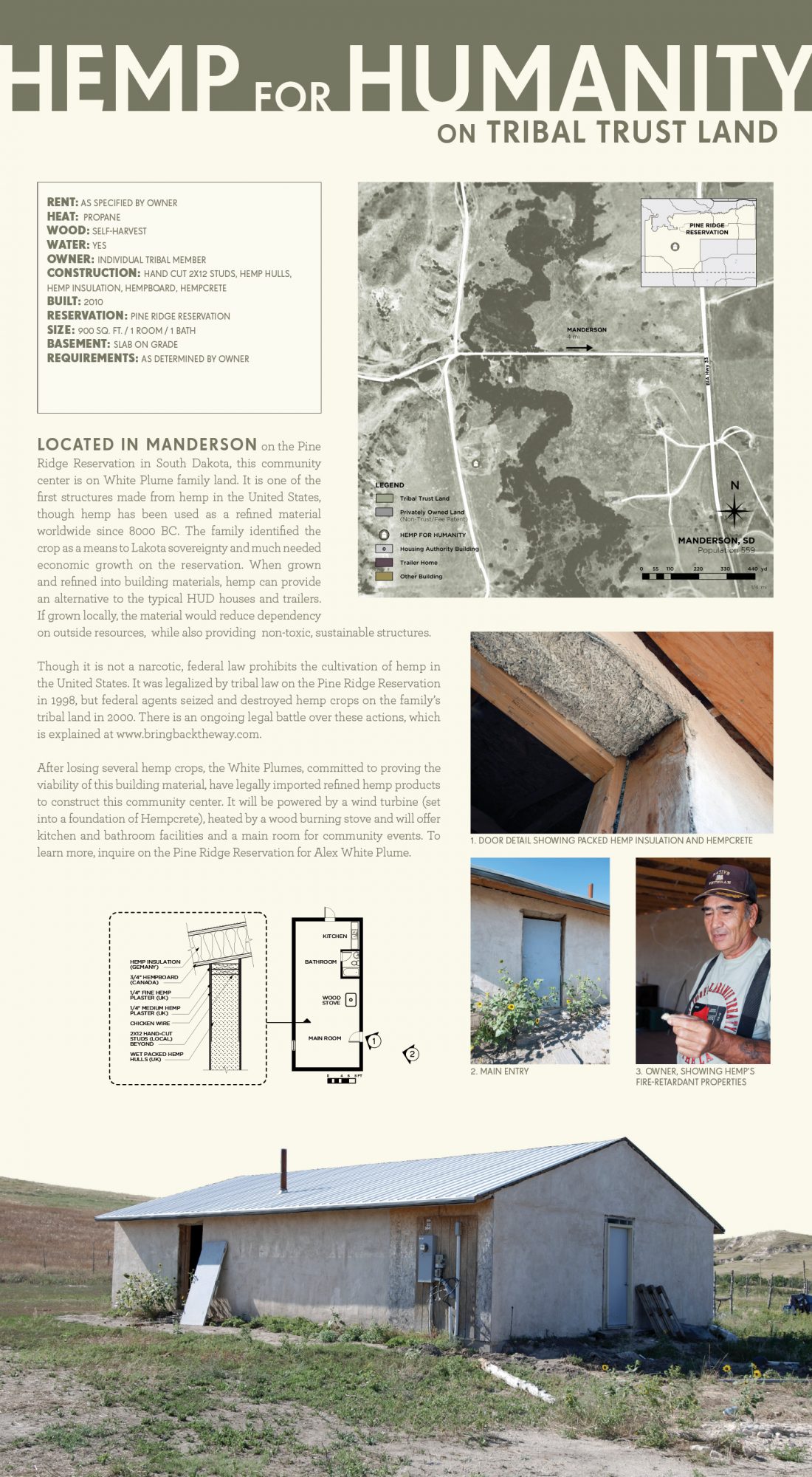Native States of America
The Lakota live somewhere between sovereignty and dependence—the resulting paradox of a reservation system with independent laws under the ultimate jurisdiction of the United States. Treaty rights, including “free” land, food subsidies and housing, maintain the tribe’s dependence on the United States. While the extreme isolation of the reservation can provide a welcome buffer from western life, it is also a repressive force that maintains poverty and prevents mobility. The reservation, unable and unwilling to integrate into western society, is simultaneously never free from its control.
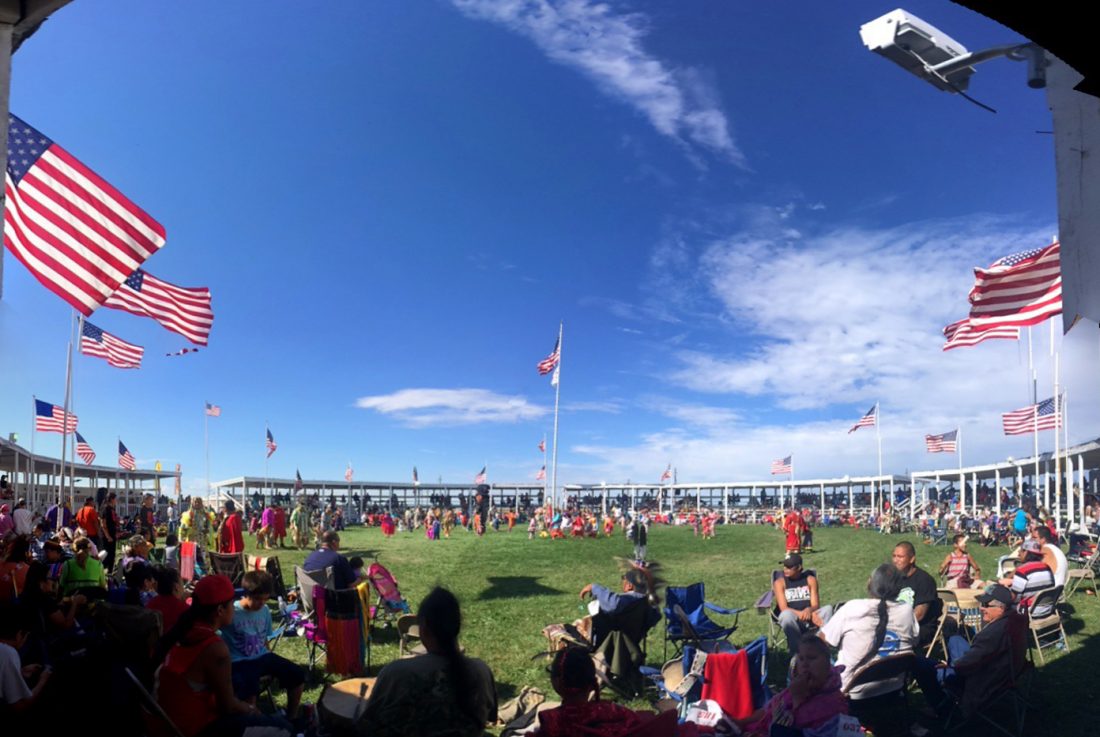
Native States of America comes from an ongoing research project, Post-Reservation, which aims to visualize current conditions and lay groundwork for innovation on the Lakota reservations. This exhibition highlights several of the major pressures that affect the built, economic and cultural environment.
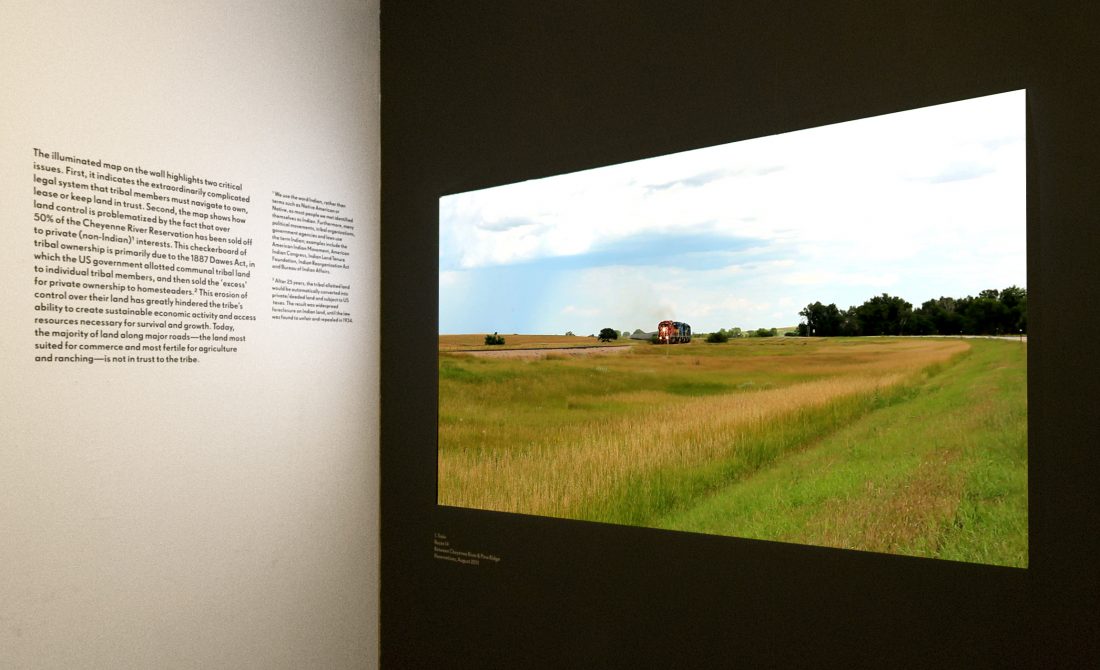
The exhibition tracks multiple scales—from the reservation, to the single home, to the individual. The map illuminates a complex checkerboard of land ownership within the boundaries of the Cheyenne River Reservation.
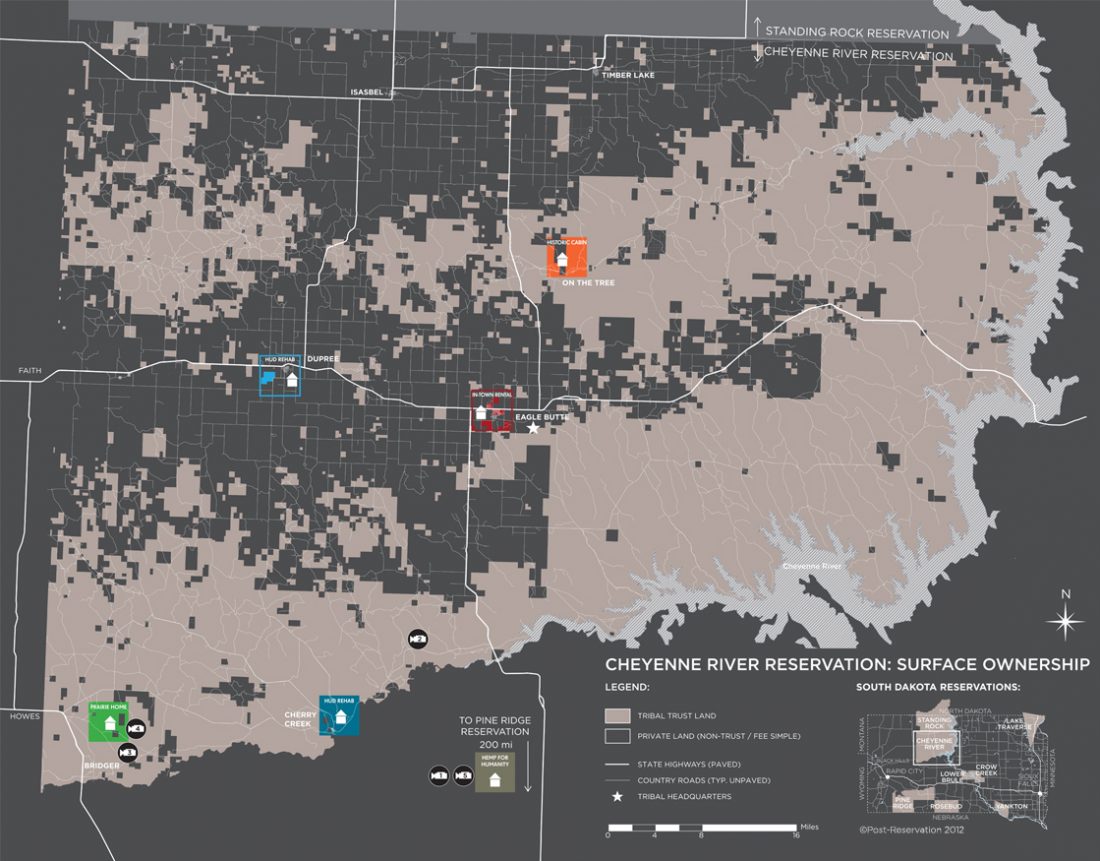
while the films expose the vast expanse of the prairie landscape

Native States of America’s ‘real estate’ posters depict a very different situation than that seen in realty ads in the greater United States. The lack of a housing market, amenities and infrastructure are conditions comparable to those in developing nations.
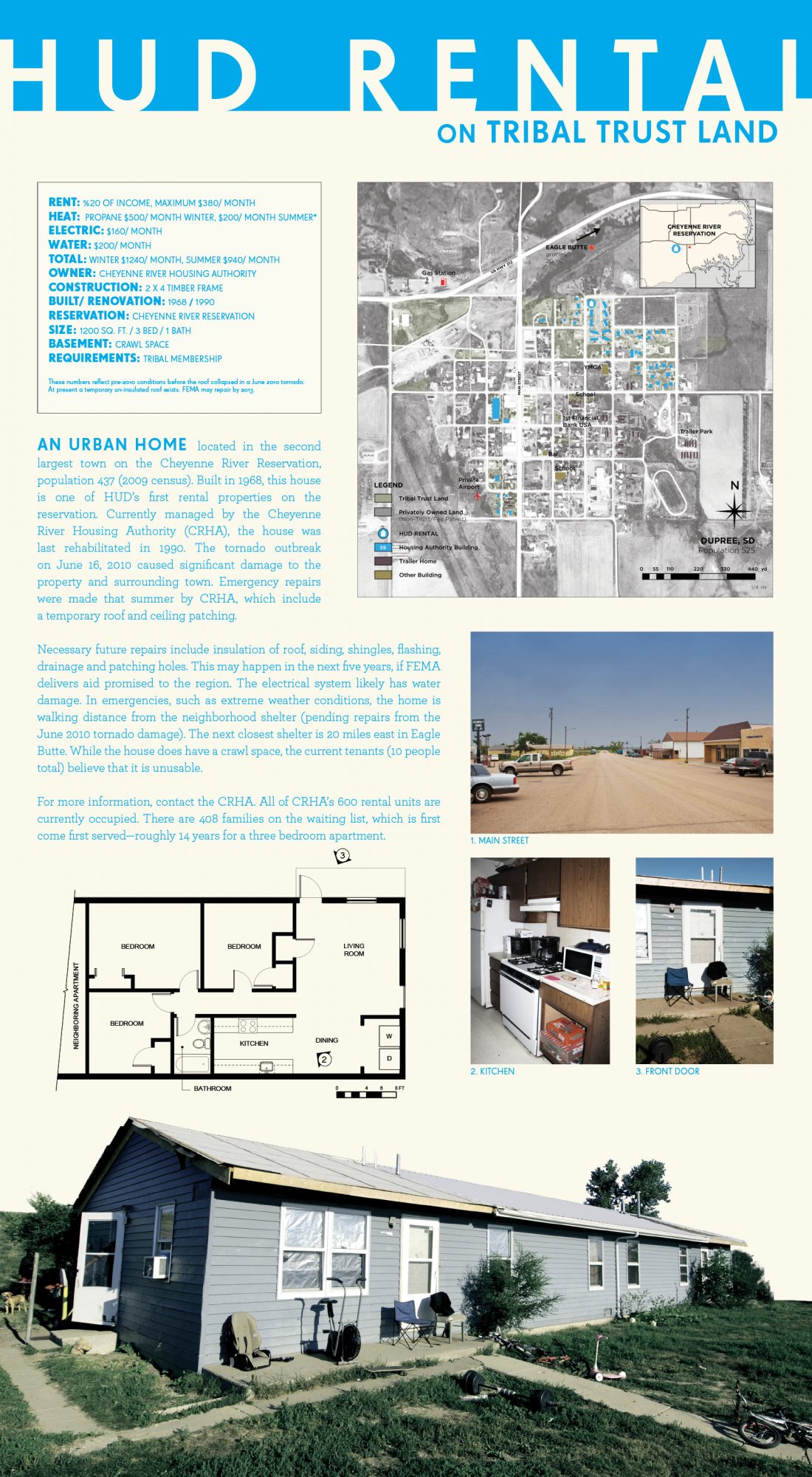
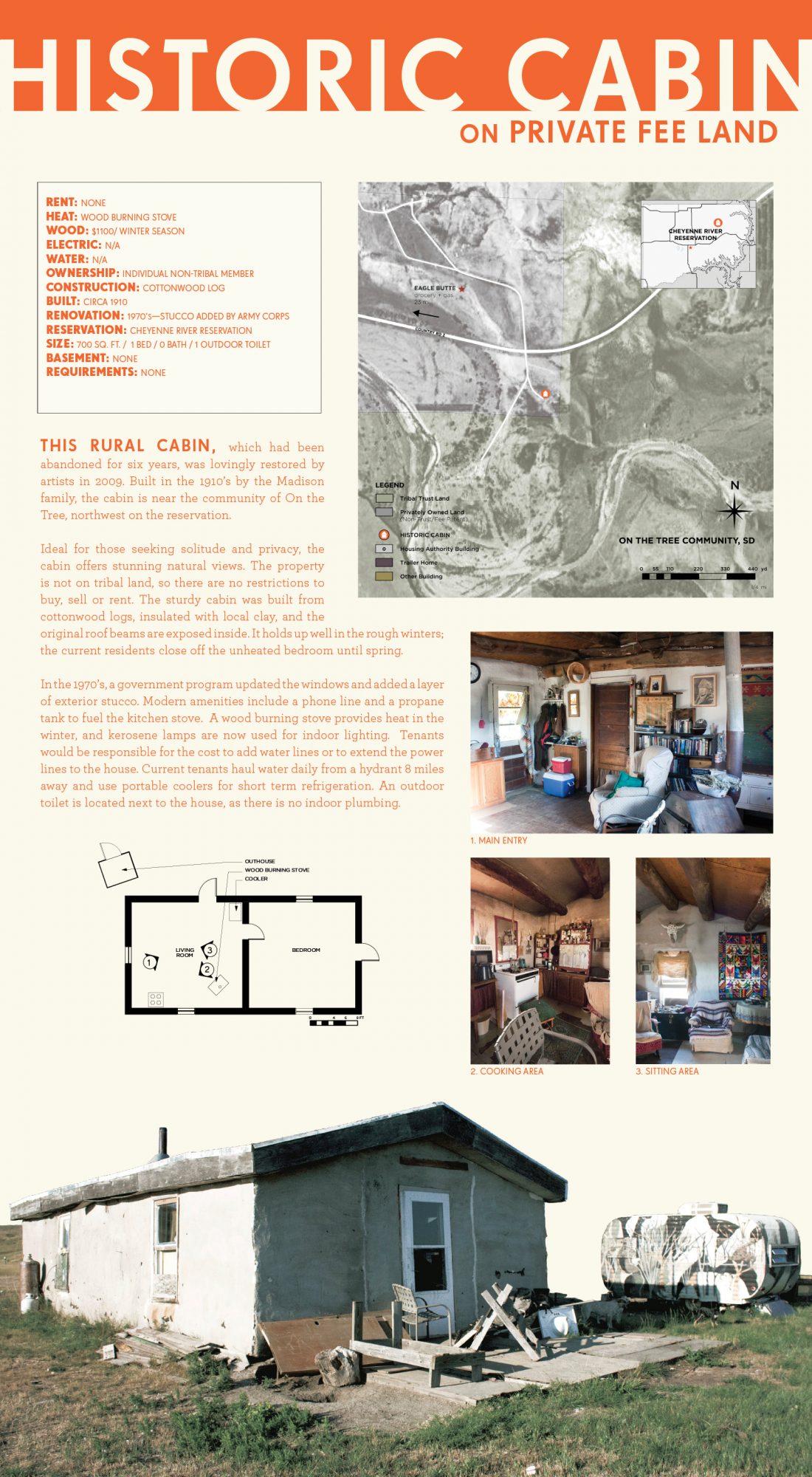
The video interviews offer first-hand accounts of how people view their homes and the overall environment on the reservation, and share some of the initiatives undertaken to improve both individual homes and the larger community.

Today, there is experimentation with local and sustainable building technologies on the reservations. Professional, cultural and technical leaders are making a difference with limited resources, though lagging infrastructure hinders growth. Despite the history of oppression that has faced the Lakota, a cultural resurgence is occurring.
